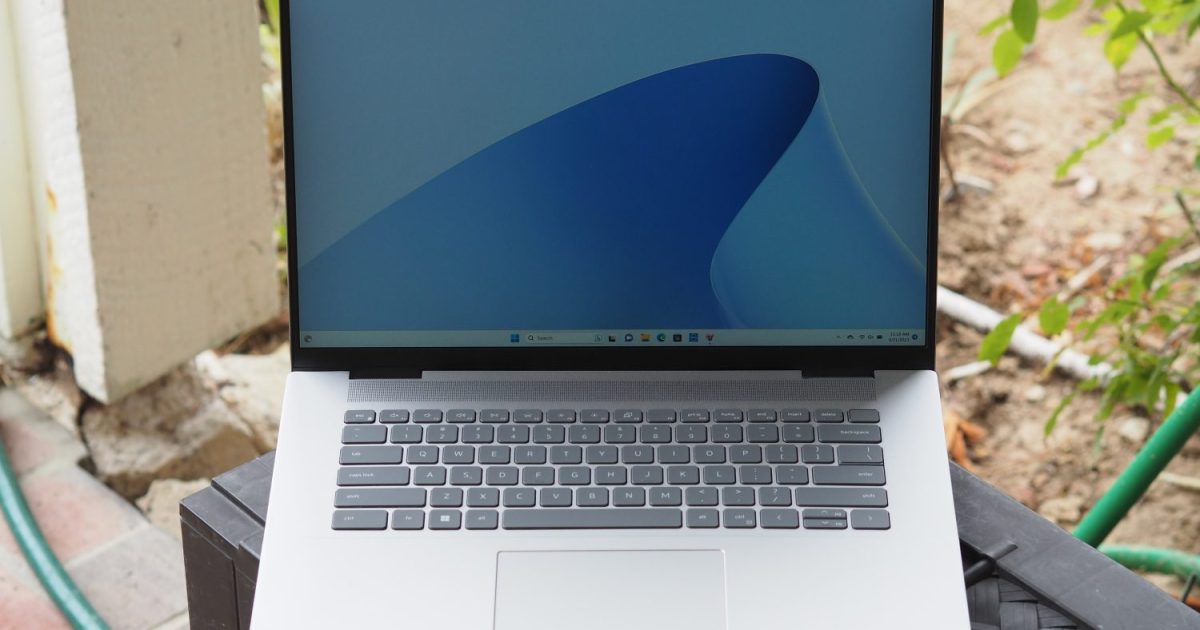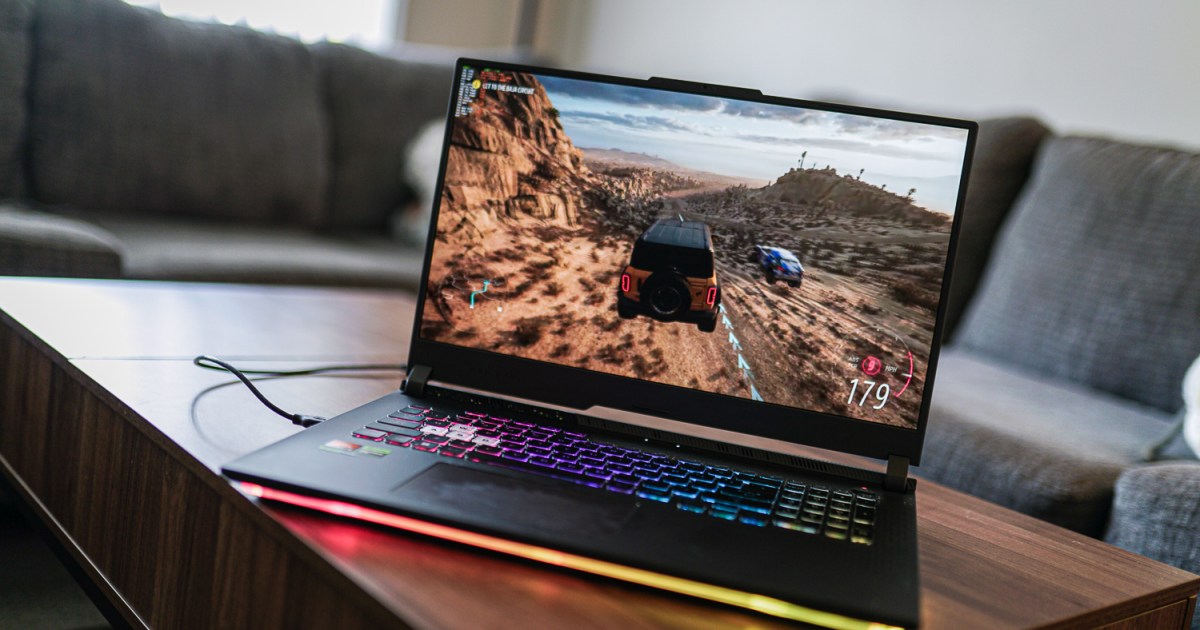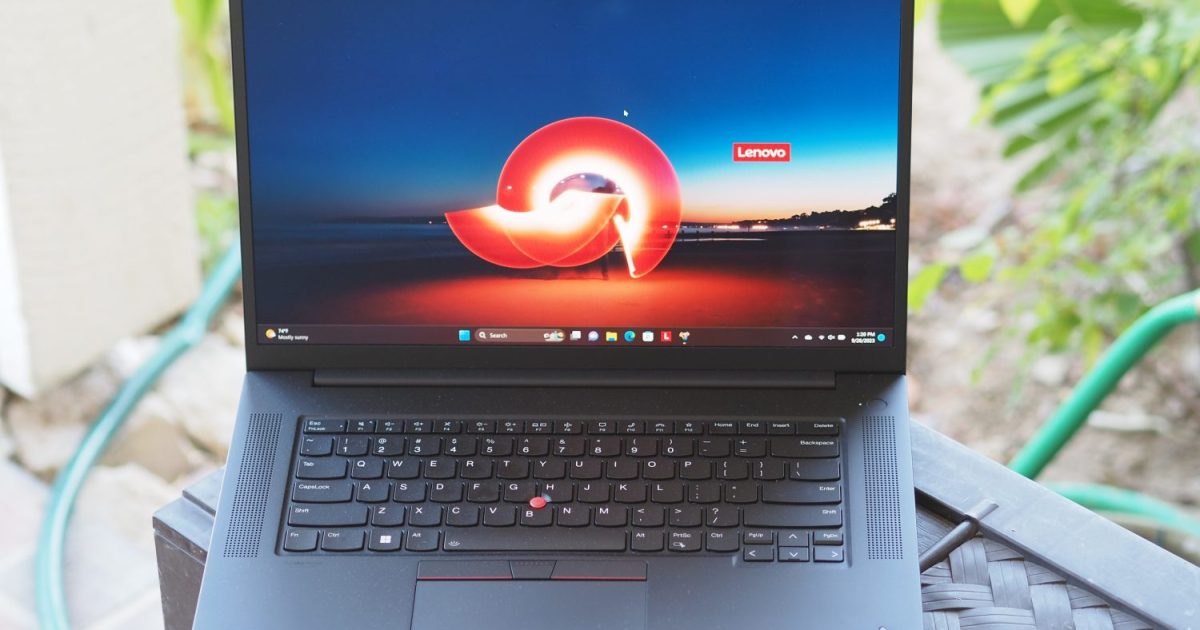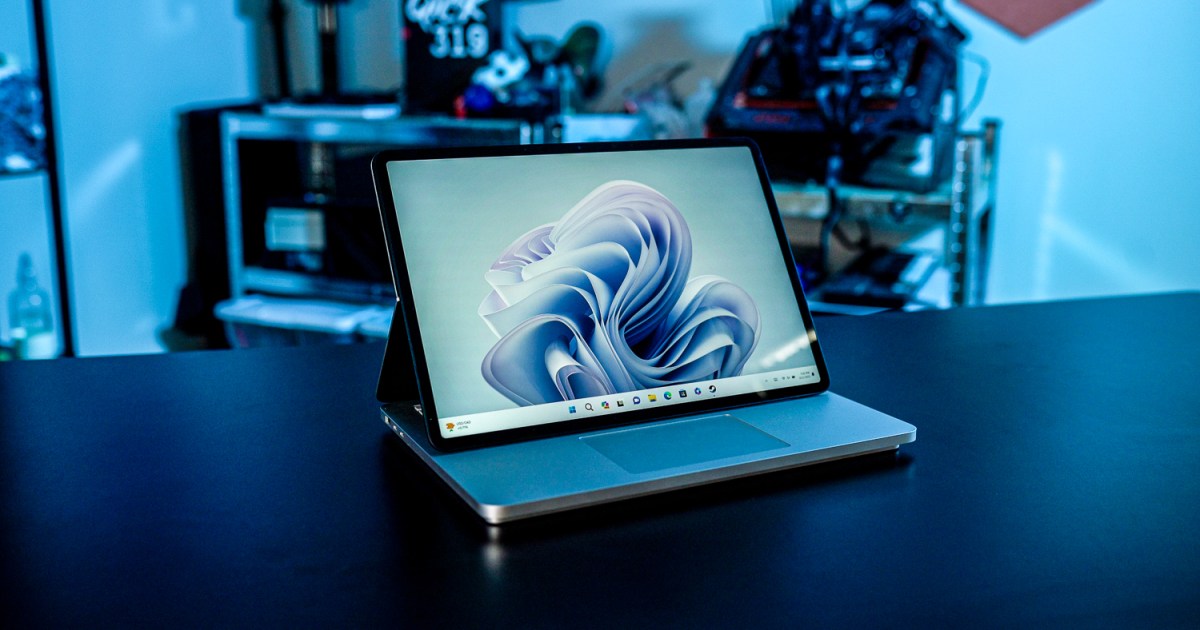The Asus ROG Ally with the Ryzen Z1 Extreme impressed with its performance, surpassing the Steam Deck. Now, the base Z1 model arrives, offering a lower price point ($600 vs. $700) but with a less powerful processor. While retaining the same 512GB storage, 16GB LPDDR5 memory, and a stunning 1080p 120Hz display, the performance difference raises questions about its purpose. This review delves into the Z1 model’s performance, comparing it to both the Z1 Extreme and the Steam Deck to determine its place in the handheld gaming market.
 Asus ROG Ally handhelds side by side.
Asus ROG Ally handhelds side by side.
Ryzen Z1: A Step Backwards?
Contrary to expectations, the Ryzen Z1 isn’t an enhanced version of its predecessor. Instead, it features fewer CPU cores (six versus eight) and a significantly reduced GPU core count (four RDNA 3 cores compared to the Z1 Extreme’s twelve). This translates to a noticeable performance drop, impacting the ROG Ally Z1’s gaming capabilities. A slight reduction in L2 cache (6MB from 8MB) also requires allocating more shared memory for demanding titles like Returnal. While still capable of running games, the Z1 lags behind the Z1 Extreme and even the Steam Deck, which boasts twice the number of graphics Compute Units despite its older architecture.
Performance Analysis
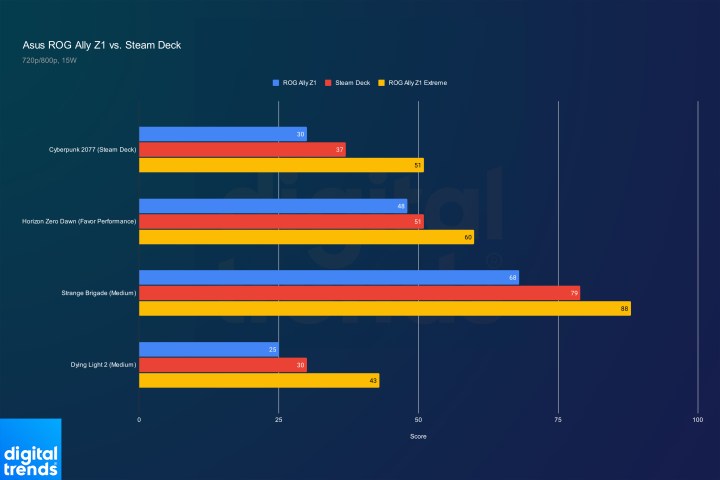 Asus ROG Ally Z1 performance against the Steam Deck.
Asus ROG Ally Z1 performance against the Steam Deck.
Comparing the ROG Ally Z1 to the Steam Deck reveals a consistent performance deficit across various tested games. While minor in some titles like Horizon Zero Dawn, the gap widens significantly in others, such as Dying Light 2, affecting playability. Although technically cheaper than the 512GB Steam Deck ($600 vs. $650), the Steam Deck’s entry-level 64GB model offers expandability via microSD card for a lower initial cost.
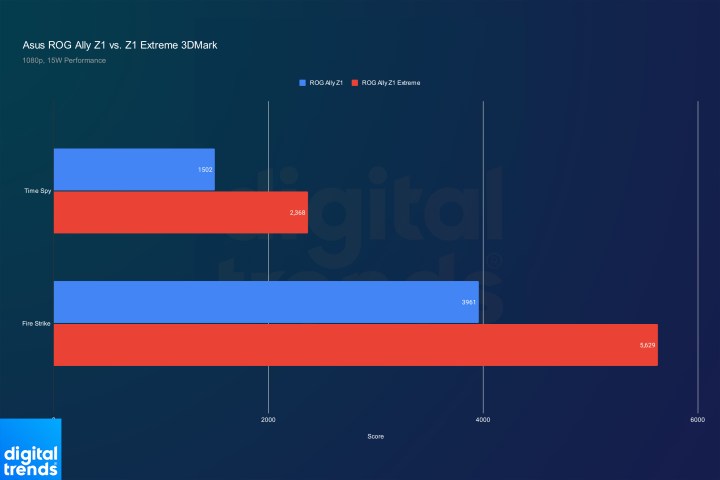 ROG Ally Z1 3DMark scores at its Performance mode.
ROG Ally Z1 3DMark scores at its Performance mode.
Benchmarks further highlight the performance disparity. In 3DMark Time Spy and Fire Strike, the Z1 is 37% and 30% slower, respectively, than the Z1 Extreme at 15W (Performance mode). This difference expands to 51% and 42% when both devices are plugged in at 30W (Turbo mode).
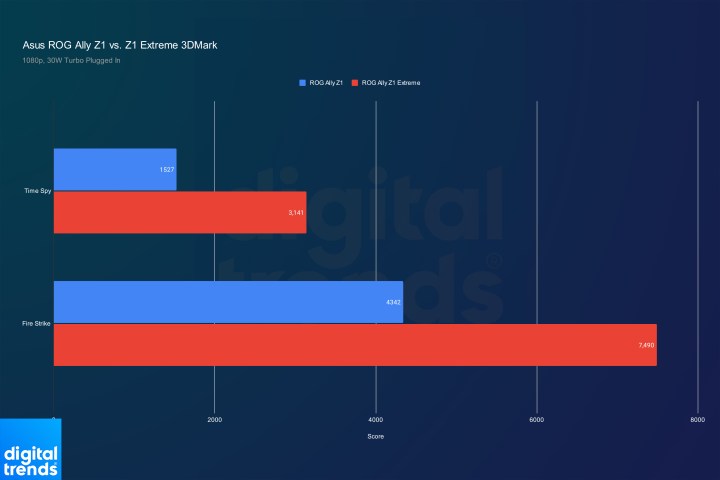 Asus ROG Ally Z1 performance in 3DMark with the Turbo performance mode.
Asus ROG Ally Z1 performance in 3DMark with the Turbo performance mode.
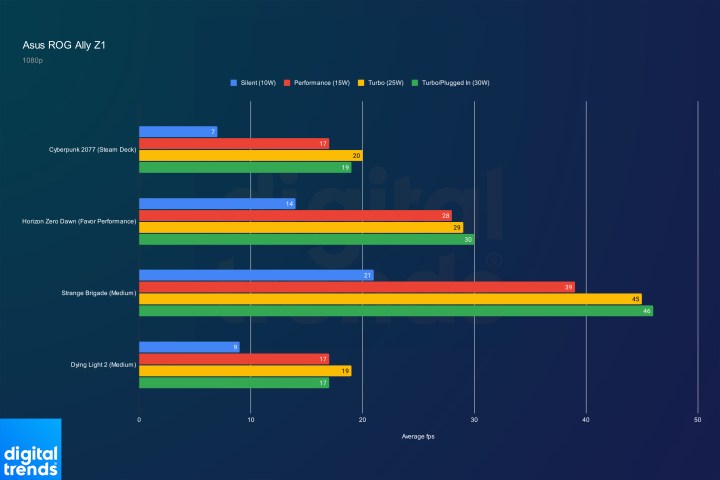 Asus ROG Ally Z1 performance at different performance modes.
Asus ROG Ally Z1 performance at different performance modes.
The limited performance gains in Turbo mode suggest the Z1 struggles to utilize the extra power, likely due to its lower core count. This contrasts with the Z1 Extreme, where Turbo mode provides a more significant performance boost.
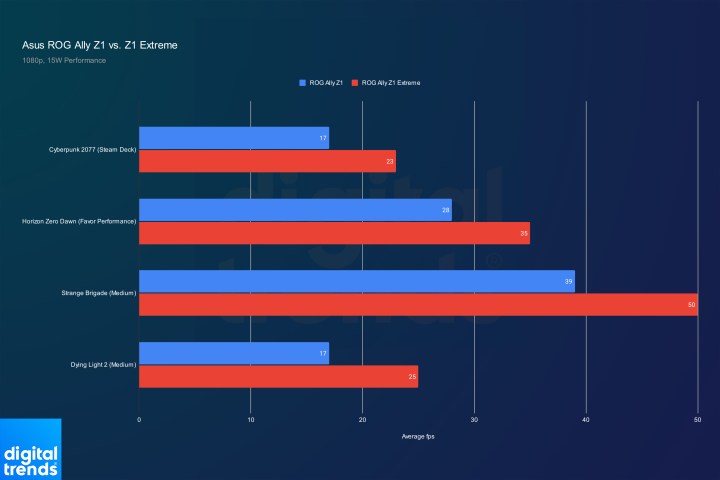 asus rog ally z1 review vs extreme performance
asus rog ally z1 review vs extreme performance
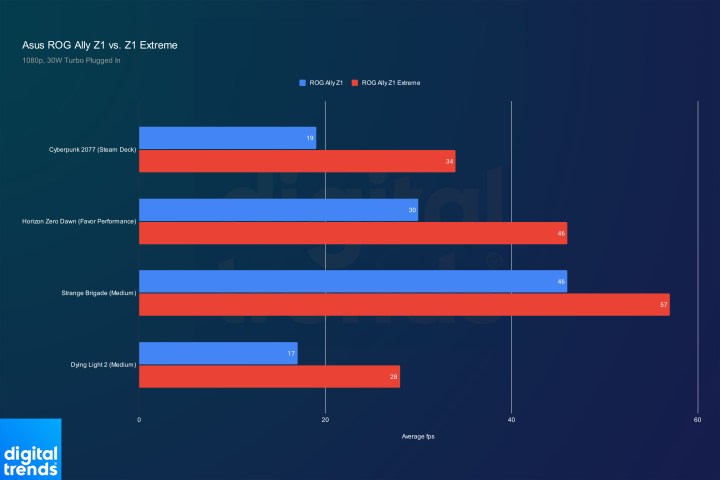 asus rog ally z1 review vs extreme turbo
asus rog ally z1 review vs extreme turbo
User Experience and Battery Life
 Sea of Stars running on the ROG Ally.
Sea of Stars running on the ROG Ally.
Despite its lower power consumption, the Z1 model offers similar battery life to the Z1 Extreme: roughly four hours for less demanding indie titles, two hours for AAA games at 30 fps, and around one hour in Turbo mode. The vibrant 1080p 120Hz display, while visually appealing, contributes significantly to battery drain, even in less demanding games like Sea of Stars. Reducing the refresh rate or resolution to extend battery life negates the ROG Ally’s advantages, making the Steam Deck a more practical choice for such games.
 Lies of P running on the ROG Ally Z1.
Lies of P running on the ROG Ally Z1.
Testing with demanding titles like Red Dead Redemption 2 and Lies of P required significant compromises in graphics settings and upscaling techniques to achieve playable frame rates, impacting visual fidelity. Even then, battery life remained a concern. Starfield proved challenging, with low frame rates and compromised image quality making it difficult to enjoy.
Conclusion: A Difficult Recommendation
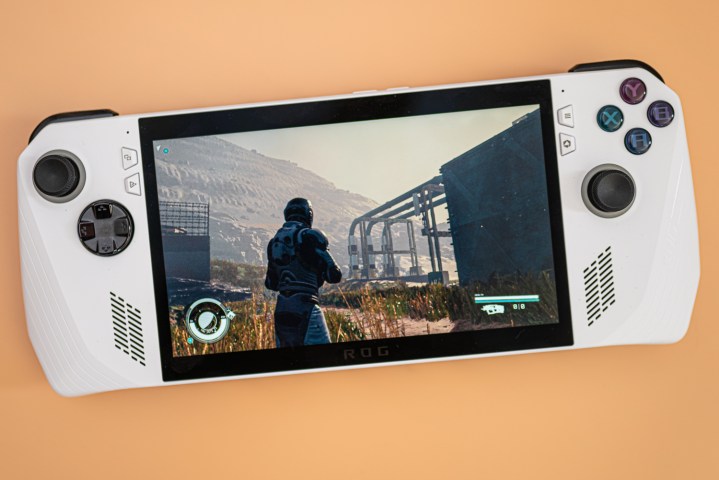 Starfield running on the ROG Ally Z1.
Starfield running on the ROG Ally Z1.
The ROG Ally Z1 struggles to find a niche. It lacks the Z1 Extreme’s performance and faces the same Windows 11-related quirks and battery life limitations while being slightly slower than the Steam Deck. Its $600 price point seems strategically positioned to encourage consumers towards the more powerful and arguably worthwhile $700 Z1 Extreme model. The Z1 offers no compelling advantages over existing alternatives, making it difficult to recommend.






